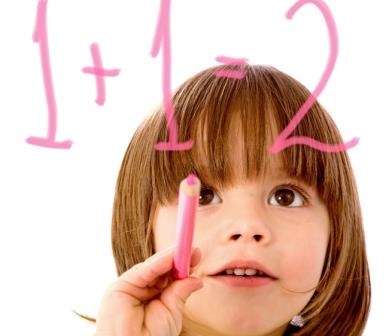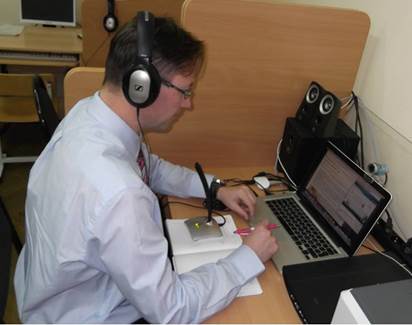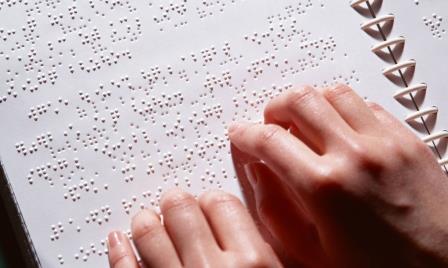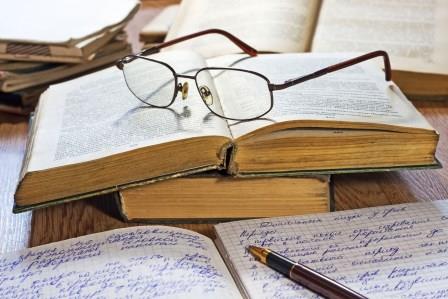Education and the personal development of intervened persons are rarely in the script for military interventions. When an intervention is being planned, prepared and eventually realized, its main task is to gain power. There may be different goals, such as regime change, military domination, ending a conflict between two or more fighting parties, and more often than not the beginning of state building, which involves raising the cultural and educational level. Both research and my own experience in the Balkans and Afghanistanhave taught me that interventions are focused on the state, i.e. state-building and developing statehood, and tend to neglect the societal, cultural and educational base necessary for these endeavors. Let me limit my considerations to recent humanitarian interventions such as the Kosovo andAfghanistan missions; wars like inIraq orSyria produce similar effects on education, but are even more complex.
Let us have a look into the changes in a society that has been shaped by violence, exile, bad governance, military intervention from the outside, and an increasing disappointment with democracy.Afghanistanis undergoing heavy changes. The ISAF/OEF-combat forces from the beginning of 2015 are replaced by a small training mission (Resolute Support) under leadership of theU.S., with German participation. The Afghan government is under renovation, with a new President and a CEO, who has been his bitter rival in the elections; the country is facing higher unemployment, less economic growth, a resurgence of the insurgent forces, notably the Taliban, and increasingly disenchanted donors.
In one word, the prospects for a continuous peaceful development are gloomy and uncertain as ever before. What are the humanitarian lessons that the Afghan people want to accept, i.e. that have been learnt? How is youth growing up in a society that has not known peace for more than three generations? How can formal and informal education come together in times, when the concepts for qualifying capacities and forming open personalities are either changing or not even touched in order to prevent unrest?
1. Survival of the Intervened. Before we discuss the post-war effects, let us have a look into the situation for social and educational development during war and violence. The key question was in this context, if we have observed specific new kinds of informal education in times of military intervention. I have already accounted to the socialization and the learning by simply being confronted with a challenging and urgent situation. But there is more to the question. Let me ask two questions: one is, how the bellicose constellations of war produce or hinder the development and emergence of talents and the making of maturing personalities; and the other question is pointing at the permanent effort to integrate the scouting for and saving of educational capacity in a more or less formal education process.
The war interrupts a formal education, and of itself, this is a lesson, which by students and their teachers must be learnt. If we assume 30 years of war after the massive changes in the 1970s, then we are facing a quite significant vanishing of formal education for the younger generation. Schools were deserted by displacement, exile, looting, threats and finally legally closing or being reduced to a minimum of learning opportunities. War discontinues formal education, and this, in itself, is a lesson that pupils and their teachers have to learn. We can say that education as part of the welfare governance of a functioning state has lost its formal and legitimate format, if it ever had one apart from small urban elite. This does not mean that there was no education at all: war itself is teaching generations, and the diverse techniques of surviving violence challenge human capacities both on the side of the ruling powers and in opposition. We understand that this situation is part of social change and that education is a condition for as well as a result from such change.
We know that growing up and coming to age under the conditions of war and exile forms different personalities; we do not know equally precisely what kind of changes and significant properties war and violence produce in an individual and in the diverse social groups. We know from Western experience that wars help to emancipate women from unequal gender relations; we know that children learn survival techniques, but we do not know well enough how they acquire the new capacities; we know that values and virtues are shifted, such as empathy, love, friendship and trust as well as hatred, suspicion and negligence. In one word, wars and violence help changing the deontology of whole people and its sub-structures. And we should not forget that for wars is generally true, what Peter Brückner says of growing up in a dictatorship: Childhood remains also childhood under unfree circumstances. His whole biography is a telling example for this proposition (Brückner 1980).
And I take the lifelong concept of political psychology of this eminent author as the example for the new faculties that can be acquired during totalitarian situations, dictatorship or war. This leads us towards a strong statement: extreme conditions form extra-ordinary personal characteristics – that we may coin negative or positive in retrospect. But within the range of new capacities, we may assume creativity as a survival art. But being alive (=having survived) is also a condition for becoming creative. The challenge to realize surviving does not come out of the blue; it demands at least some understanding for what is going on, for what is the case. There must have been some education, some formation, a certain motivation that would not have been killed by the extreme conditions.
In other words, while extreme conditions stimulate or awake certain capacities and virtues, the do not build them (alone). Young people rarely fight on their own and they rarely survive without an adult environment (exceptions granted) from which they implicitly learn. There is a trend towards imitation of the elders and parents; this is true for traditional societies more than for our recent Western concept of growing children. Informal education is widely; or it is imposed by the vertical hierarchy of age and status, where taking orders are part of the socialization of the next generation. These two elements do certainly less contribute to the emergence of creativity than the aforementioned experiences. Another informal branch of education is the shifting of the learning process towards religious, political and ideological indoctrination during adjustment in extreme conditions. This kind of enforced learning is meant to strengthening the children’s will and confidence in the “just” cause of their elders’ endeavors. But, at the same time, it allows bypassing the shallow dogmatism of traditional indoctrination and produces creative resistance, as is described meticulously in Brückner’s biography.
Socialization under hardship prepares for such conditions better than induced negligence (you are safe; or: God will take care of you, and if not God, then your parents, or the leader or the state). For formal and informal education under normal conditions it should be true that extraordinary, extreme conditions can be eventually expected. It is a kind prevention as opposed to negligence or appeasement. A critical parenthesis necessary: There are dictionaries and encyclopedias of survival techniques, i.e. handbooks with practical tips and moral enhancement. In a widely read German specimen we read: …Also survivors do not survive everything. This handbook can only help you to cheat death. It can help reviving lost instincts and skills. It can shield you from gliding down into civilizatory degeneration. It shall empower you for adventures that you would not have believed in. And it should give your life a more forceful dynamics and a higher intensity and fulfillment in your being (Nehberg 2000, 5. My translation).
This is, of course, a rather outdated position, reminding us of the Psychology of Konrad Lorenz and the fictional heroism of Ernst Jünger. I have brought the quotation because of the closeness of today’s survivors, i.e. veterans from recent wars, who, in a post-heroic age, glorify their adventurous surviving. Survival in such view is far from the existential challenge that war and other extreme conditions bring towards human beings, notably children. I hold that the adventurer’s attitude is not true for children and adolescents, who will be traumatized or depressed by their military experience, but cannot see too much heroism in the way how they survived, because they were hardly thinking of a public perceiving their efforts. There may be exceptions with child soldiers and juvenile suicide attackers, but I am not sure if my information is sufficient to further elaborate.
2. Intervention and the creativity development. The question is now if and in what ways an intervention may stimulate or restrain creativity among the affected people, the intervened. Creativity unto itself is a shallow term. It is interesting that there is no entry “creativity” in Nehberg’s handbook… I will narrow the definition a bit in relation to the context of the article. Creativity is opposite to the passivity and indifference produced by the conflicts and the experiences from the immediate past: suffering, hunger, torture, losses of family and community members, destruction of property etc. We know all this from daily confrontations with the effects of wars and violence. But this is only the surface. People have lost their creativity when there is no future for them. Creativity would mean the emancipation from this status of non-participation in public life and politics. (This is a big leap in theory, but it can easily be demonstrated as one of the core problems for any intervention force: that most people, apart from the apparent elite, don’t have any motivation or drive to change their fate when they perceive the interveners and their local lieutenants acting solely responsibly for their social reality).
Post-war and post-conflict need to be periods of compensation and even healing of the traumatic experience from survival efforts. It is not trivial that the situation changes rapidly when the extreme conditions shift into post-war normalcy. But we assume that certain levels of interest, imagination and creativity do not get lost altogether, when security and a less challenging environment arrive. It is certain that creativity and normal capacities of cognitive and sensual perception suffer from undetected traumas, both individually and group-wise. But these capacities do not disappear forever, when the traumas are being treated and new social stability slowly emerges.
Can any society compensate for lost years in education and creating stable social circumstances? Yes, this is possible, as we know from numerous cases worldwide: Society never stops this process of reconstruction. Scars, wounds, even many lost cases remain, but in general, there is an attempt to overcome the bad time. The generation of survivors will also be the generation of teachers for the post-war youth. I know that this sounds idealistic, but it is not. What we can observe is that an imperfect compensatory environment can emerge. There are still hunger, violence, corruption and war-induced deficits in social interaction. However, the compensation has also the quality of resistance against the continuation of the terrible experience. It may not be “progressive” in the political sense, but it is a means to allow progress in social communication.
But society is not in the focus, at least in the beginning of any state-building intervention; and so is education. This is true for many wars, and for almost all military interventions, even for those that are mandated by a peace-building mission or a humanitarian justification, or arrive under the title of the Responsibility to Protect (R2P). Theory offers a choice. Either we focus on the state as an actor that will determine the structure of a given society or this society must be affected by the intervention in a way that makes people willing and capable to reform or shape their state. Of course, in reality both approaches are complementary, but a state-oriented policy creates rather different results from population-centered strategies that want to change society first. The changes should also involve education and creativity development.
Military humanitarian interventions aim to end a conflict and to restore a state that can act as a counterpart within the grids of global communication on all relevant sectors. This means that security is a top priority among the goals of good governance, and then often followed by the Rule of Law and welfare governance. But political action under the imperative of security is not only a necessity, it bears its risks: the securitization of an intervention tends to ignore that there is an underlying life-world of people who are live under circumstances far away from normalcy. Securitization does not only mean that security governance is given priority; it implicates the security aspect dominating (all) other fields of governance as well, in particular in the rule of law, communication and human rights sectors including the right to education and a creative development.
There are the interveners who impose new institutions and rules and create a series of post-intervention conflicts, there are traditions and rituals that simply can no longer be performed or have lost their meaning; there are traumas and personal losses; there is a breakdown of social order and stability on all levels etc. In this context, post-intervention can best be compared to post-war situations. Apart from arraigning the monopoly of violence for a legitimate actor (mainly the state/government that is preferred by the interveners), the main task of an intervention is to overcome the effects from those violent conflicts that were the reason and justification of invading a foreign country. This has many consequences on all levels: the sovereignty of the intervened state is at stake, constitution and laws need to be renovated, the division of powers should be established etc. (Certain handbooks exist presenting a checklist of what you need for effective state-building).
When I said that society has been frequently neglected by interventions, I mean that the social and cultural fundaments of socialization, of communication, of regulating conflicts and of reproducing elementary aspects of what is considered normal life, are being given too little attention. The best example is that education and the mindset of university students are two elements the interveners realize in their importance only when it is too late. When I was engaged for UNMIK in Kosovo, my permanent claim for including education in the peace-talks was in vain, and reconciliation and institutional reforms became much more difficult than they would have been when representatives of this sector had participated in the peace-talks from the first ceasefire negotiations. This is also true for other cultural sectors.
One important component must be singled out: youth. Over 50% of the populace is younger than 25 years. The birth rate is among the highest world-wide. Young people do not really know what their future will be, even if they aspire a bright and prosperous one. The key trajectory is education, of course. I do not mean training alone. This is my other experience from Kosovo andAfghanistan: open the education system, and creativity will be set free as a spin off. The spirit of liberation and humanitarian intervention merges with the big western promise: career through education.
Youth is not creative per se. Young people need the same type of motivation and stimuli to creativity as the older generation. They need an environment that is rich enough as to provoke the wish to challenge reality; and if there is not enough experience available, the wish may come up to gain experience instead of remaining embedded in the traditions of the existing life world. The education system is not the only instance that can enrich an environment. The social structures, political circumstances, deprivation, violence, trauma etc. are ingredients for a context which calls for creativity and discontinuation of the basic patterns of lifeworld. State and government try to colonize the lifeworld (J. Habermas) and bar creativity from becoming a factor in filling the public space that is needed for political change. At the same time, in the context of insufficient development and availability of formal education to the public, an attention should be drawn to instructional and educational potential of creativity and manifestations of social activity, which can play a compensatory role in post-war period.
3. Creativity in the post-war situation as a source of cultural development and social learning. Our observation is that in post-war societies and post-intervention countries you find a particular structure of society; in the case of intervention, we even speak of societies of intervention and their irreversible new social structures (Bonacker et al. 2010). A culture of intervention emerges in analogy to cultural developments under occupation. Any cultural act that occurs in a society of intervention bears some qualities that we do not find in our normalcy at home:
- Aesthetic and moral ingredients of arts and intellectual production are always in a certain critical position towards the interveners, even if they are meant to be disinterested or neutral.
- Consequently, they are also challenges for the cultural environment from which they emerge.
- There is a certain tendency to adapt to the imported elements from the cultures of interveners; at the same time this element of mimesis is challenged by the tendency to oppose any similarity to cultural products of these cultures.
- Native, “indigenous” features are often invented to adorn the artifacts with a flair of authenticity; many items of local culture only stem from earlier periods of external influence or domination (post-colonial complex);
- There is normally no critical public that is capable of judging quality and importance of the new products.
This list can be extended, of course. And each item on this list is a theoretical challenge.
Creativity is of no societal importance as long as it remains confined to the private sphere; many intellectuals and artists from times before the conflict take care of their memory of creativity and productivity in the past that is often idealized. The very moment creative processes go public, i.e. become perceivable by the environment of the actor and they are also targets of criticism and classification. It is important to many players in the socio-political and socio-cultural games to check the relevance of the novelty (as a product of creative processes). More precisely, the relevance for the observers’ or authority’s sphere of power and judgment is being identified. Most frequently, a creative process is being asked if it hampers religious or ethical or economic developments as far as these are part of politics. It then will be transmitted that an activity or object of art is offensive towards the Holy Religion, the Sharia Law, the customs and traditions…or, simply alien, strange, “other than”….
Creativity among the intervened is basically not different from any creative acts in other societies, and yet, its functions and features are quite distinct. As I said earlier, creativity depends on attaining future, some sort of future. Future inAfghanistanmeans overcoming a period of more than 30 years of atrocious violence, war and displacement. This process of coping with the immediate past does include the short-lived memory of at least two, more often three, generations. All of them never knew what peace is and what peace could mean to them. Constructing a future means imagining a peaceful society. Roughly speaking, such construct gives answers to the question “What are we going to do, when we will live in peace?” In this case all forms of creativity are capable to perform for young people the function of "social knowledge", scientific and every day.
When we analyze the diverse sectors in which Afghan sportspersons, craftsmen, artists perform, we can perceive immediately a few elements that are not unexpected, i.e. the effect of globalization and the impact of media: many of these features are reported by western networks to a western audience, which is larger than the interveners’ societies; and at the same time the news is diffused in Afghanistan and gains some feedback from the local public. To illustrate I shall provide a real-time peep into some cultural activities by Afghans (entries from Google.de, seen 20 August 2014)1
November 2013
Afghan Mountain Climbers on the High Summits of the Mountains http://www.afghanalliance.org/kabul-five-day-film-festival-launched-bbc-pashto
Afghan Youth Orchestra opens season finale of Afghan Star
http://www.afghanistannationalinstituteofmusic.org/latest-news
December 2013
The Glass-artist and craftsman of Herat [province] with Half a Century Experience http://www.afghanalliance.org/glass-artist-and-craftsman-herat-province-half-century-experience-bbc-persian
Bloody Heart and Liver “hanging” Art Exhibition in Kabul
http://www.afghanalliance.org/bloody-heart-and-liver-“hanging”-art-exhibition-kabul-bbc-persian
Afghan Girls Major League Soccer Match in Kabul http://www.afghanalliance.org/afghan-girls-major-league-soccer-match-kabul-bbc-pashto
January 2014
Kabul: Five Day Film Festival Launched http://www.afghanalliance.org/kabul-five-day-film-festival-launched-bbc-pashto
A leap in the new generation of Afghanistan’s cinema (film industry)
http://www.afghanalliance.org/leap-new-generation-afghanistan’s-cinema-film-industry-bbc-persian
According to mass media2 “last year Afghan musicians and filmmakers also received many international awards, including an Oscar nomination (Buzkashi Boys), best screenwriting at Sundance Film Festival (Wajma), and a Grammy Award for music (Echoes of Love by Omar Akram).” “There was an increased number of arts and photo exhibitions across Afghanistan in 2013, including cultural and art events in eastern provinces. “Studying numbers on intellectual and cultural events indicated that the Afghan society, especially the youth, are more interested in cultural issues than years before..., the interest shown by the new generation of Afghans to art exhibitions is a reflection of the new realities and transformations in Afghanistan”3.
We do skiing or play football everywhere. But when kids or young persons play football and organize tournaments, there is an aspect of future and normality in it that has not existed until recently. A headline “Men and Women skiing…” may or may not provoke immediate reactions by religious zealots. Any artisan craftsmanship includes an element of virtual tourism and crafts market. But market as a stimulus cannot suffice, because there is no real sustainable market inAfghanistan. Yet, there is the memory of pre-violence markets in the urban centers of big cities – from before 1976. I.e. despite possible contradictions, there is potential for cultural and social development in any manifestation of creativity.
Within the culture of intervention, some of the proficiency in arts and sports is a part of a resurfacing local culture that had been buried under the debris of decades of violence and obliviousness. Another part is certainly imported by returnees and interveners. Both groups may or may not have adapted their concepts to what they think is appropriate to the culture in present day Afghanistan, which is a hyper-construct of sorts. Investigation in diverse forms of mimesis and the role of suppressed or falsely invented traditions is necessary, not so much for interveners and scientists in the west, but for the Afghans themselves, because they suffer from an almost totally destroyed awareness of their own past and history; the same bitter statement is true for the knowledge and critique of social structures and the opportunities to social change.
Foto 1. Orphans immediately after the war 2003, listening to afghan original music.
Foto 2. Aconvention of writers and intellectuals in the province.4
Many representatives of interveners’ administrations, like me, were surprised when they realized how intense the quest for education is with many of the intervened people. One reason is that most interventions occur in countries where an authoritarian system had suppressed any social upgrading through education: be it for the majority of people, be it for certain minorities. I belong to the lucky few that were able to shift their surprise towards political action. The core was, beside legislation, concentrated on creating public space. In Kosovo we called the result “Republican Club”; with a little subsidy from a German NGO we established a place where the expression of creative thought and critique was not hindered by conventions or traditions. Very soon, public attention also brought both, recognition and opposition.
The third ingredient is the quest for change, the demand for all liberties that may come from the new freedom. The specific push for creativity comes, when the spaces for these liberties – workshops, sports grounds, exhibitions, public concerts and festivals, movie and literature events, - are copied into the life-world of the intervened youth. The obtained result is far from being simple copies. The adaptation adds the critical and innovative spirit of a generation that wants to test their capability to invent and create a future. On the other side, there is opposition: all people who do not want to change the present power relations or who project a better life into the past will be afraid of such future.
Conclusion. Educators ask if lost ground in education can be compensated. My examples give some orientation for the answer. But the main argument has to be taken from the political framework of this essay. Education and schooling must be represented at all round tables where decisions for the future governance of the country under intervention are taken. Not only on top, on system level. It is important that education agendas prevent a falling back of ordinary people in their lifeworlds into the fatalism spirit and experiencing a regressive status of war and violence because of lacking opportunities.
Participants of humanitarian intervention and foreign cultural policy agencies (mainly IGOs, GOS, a few NGOs) can support the creative movements without dominating them by a kind involuntary neo-colonial attitude, provide their own production as models. There is the need for an exchange with the interveners’ cultural scenes. (Importing of exhibitions, performances and artists’ workshops, sponsored by the interveners, may give impulses, but are rarely open to a critical perception without a risk for local culture bearers). This is different when Afghan artists and cultural activists come to their interveners’ countries, and realize at once that their own quest for liberty and expression, for experiment and novelty, is often received with a kind of condescending fatigue that is reduced to political empathy. It is an experience that will be useful upon return of these exchange activists. It can also be a lesson learned for organizing any future humanitarian intervention.
References:
- Bonacker, Thorsten/Free, Jan H./Zürcher, Christoph/Daxner, Michael (Eds.) 2010: Interventionskultur: Zur Soziologie von Interventionsgesellschaften, Wiesbaden.
- Brückner, Peter 1980: Das Abseits als sicherer Ort, Berlin.
- Nehberg, Rüdiger 2000: Survival-Lexikon, München.














